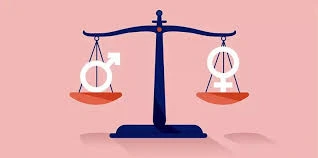Bangladesh emerged as the top performer in South Asia and Pakistan remained at the bottom of the regional list at 148th. To achieve full gender parity is still estimated to be 123 years away.
World Economic Forum’s Global Gender Gap Report 2025 has raised concerns as India has dropped two positions, now standing at 131 out of 146 countries.
India continues to trail most of its South Asian neighbours including Bangladesh, with a gender parity score of just 64.1%, the country continues to trail most of its South Asian neighbours including Bangladesh, underscoring persistent challenges in achieving gender equality.
This report was released on Thursday, painting a stark picture of the systemic gender imbalances still prevalent across various sectors — from educational attainment, economic participation to health and political empowerment.
The Global Gender Gap Index that was first published in 2006 evaluates the state of gender equality across four critical areas such as Educational Attainment, Economic Participation and Opportunity, Health and Survival, and Political Empowerment.
There has been a gain +0.3 points gain in India’s overall performance. Notably, the country made progress in the Economic Participation and Opportunity dimension, where its score increased by 0.9 percentage points, reaching 40.7%.
The report highlighted that most of the indicators have remained unchanged or partially changed, there has been a rise in earned income from 28.6% to 29.9%, contributing positively to the sub index score. The labour force participation rate remained unchanged at 45.9%—the highest level India has recorded to date.
As per WEF report in the area of Educational Attainment, India scored 97.1%. There has been an overall improvement in subindex score, reflecting notable progress in female literacy rates and higher enrolment in tertiary education.
The report further states a greater parity in the Health and Survival dimension, driven by improved scores in both the sex ratio at birth and healthy life expectancy.
There has been a slight decline of 0.6 points in Political Empowerment compared to the previous edition, the report stated. Female representation in Parliament dropped from 14.7% to 13.8% in 2025, marking the second consecutive year of decline and pushing the indicator score below 2023 levels.
Similarly, there has been a decline in women holding ministerial positions from 6.5% to 5.6%, bringing the indicator score down to 5.9%.
Bangladesh emerged as the top performer in South Asia, making significant strides in political empowerment and economic participation. The country saw a remarkable jump of 75 positions, securing the 24th spot globally. In comparison, Nepal ranked 125th, Bhutan 119th, Sri Lanka 130th, Maldives 138th, and Pakistan remained at the bottom of the regional list at 148th.
There has been significant annual progress since the onset of COVID-19 pandemic, the global gender gap has narrowed to 68.8%. However, at the current pace, achieving full gender parity is still estimated to be 123 years away.
For 16th consecutive year, Iceland continues to top the rankings, followed by Finland, Norway, the United Kingdom, and New Zealand.
Now in its 19th edition, the report—covering 148 economies—highlights a mix of encouraging progress and enduring structural barriers that women continue to face globally.


